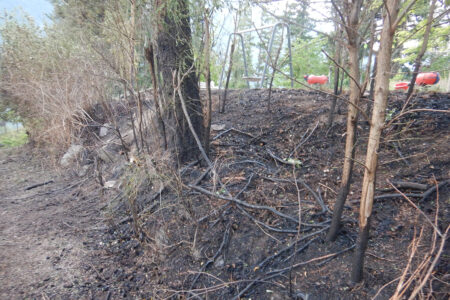SUMMING IT UP: School district 51 board of trustees
Boundary region’s school district garnered recognition for their work as school initiatives attract the attention of provincial groups. Graduation rates for the district were 94.2 percent for the 2010/11 school year, an increase of over 10 percent in four years and the success in aboriginal graduation rates is at 86.7 percent. The success rates are well above the provincial average and sparked a call to the district about their recipe for success. “The five year trend is very positive for us,” said school superintendent Michael Strukoff. “The Ministry wanted to talk about what we were doing. There is no silver bullet, if you do this, this is what will happen. I believe the emphasis we’ve put on special education, the family centres, the Glanville hub, the BSM model and the support that we offer our students across the district that contribute to helping them to support them to stay in school so they graduate.” Along with grad rates recognition, lighting retrofitting done by the maintenance teams at West Boundary Elementary school and John A. Hutton Elementary school was noted by FortisBC when School District 51 received recognition for their outstanding achievement in energy efficiency. The award was presented to Jeanette Hanlon and Dean Higashi. Old fluorescent tubes were removed from both schools and replaced with energy-efficient lamps and high efficiency ballasts for total savings of 118,300 kilowatts per hour. Myles Christman volleyball appeal The board of trustees agreed to provide support for the appeal to B.C. School Sports by Myles Christman and his parents when he was ruled ineligible to play competitively for the volleyball team at Mount Sentinel in Slocan. Christman, a Christina Lake resident, moved to the school in order to pursue his sport because the Boundary region did not have a high level volleyball program. The B.C. association has a rule in place to prevent schools from stacking teams by attracting students from nearby schools to move. While the rule has an allowance for unusual circumstances, the board determined that Christman could not play this year. “I think that we as a board should be addressing it on a bigger level,” said trustee Cathy Riddle. “I’ve had my child’s basketball end quickly because of something similar to this. We see with declining enrolment, and declining offering of any kind of sports we’re going to run into this way more often. I think we’d be far better served if we ask them to take a look at the rural schools in particular as opposed to a single issue.” Fitness room vs. library Grand Forks Senior Secondary School principal Scott Stewart and vice-principal Shawn Lockhart gave the board of trustees an update on the moves implemented during the summer. They demonstrated to the board that there has been a sharp increase in the use of the fitness room now that it is located in the main floor of the school, and that the library is also still in use in its new home. “There are huge differences between our high school library and an elementary library,” explained Lockhart. “As far as research goes, basically it’s almost all online. The numbers speak for themselves – the kids like, they use it and they’re protective of it. Our new library is almost exactly like the old library it’s just smaller. There are computers there, you can check out books.” Stewart confirmed that books are being replenished over time as budgets allow them to grow their stock of titles, and that the books which were eliminated were done so based on usage statistics. Other The new provincial education plan has been introduced and is available on the school board’s website. The plan has information on how the public can provide input to the discussion on the future of education. The previously planned trip for students to Russia has been postponed for one year. After a discussion on social media, the board agreed to explore using social media as a communication tool with students and families. Heather Shilton, co-ordinator for the Healthy Schools program, gave a presentation on the program and some of the ideas for getting children active while focusing on safety issues. She touched on the idea of walking school buses, and innovative buses that encourage walking and riding options. A key to the program is a focus on safe systems and looking at ways to change infrastructure to encourage better health. One of her key goals is to improve safety around traffic during students’ arrivals and departures, decreasing speed and encouraging alternate uses.
Chair Teresa Rezansoff, also the region’s representative at the B.C. School Trustees Association, encouraged the public to review their newest report on grant allocations prepared for input to the province.























